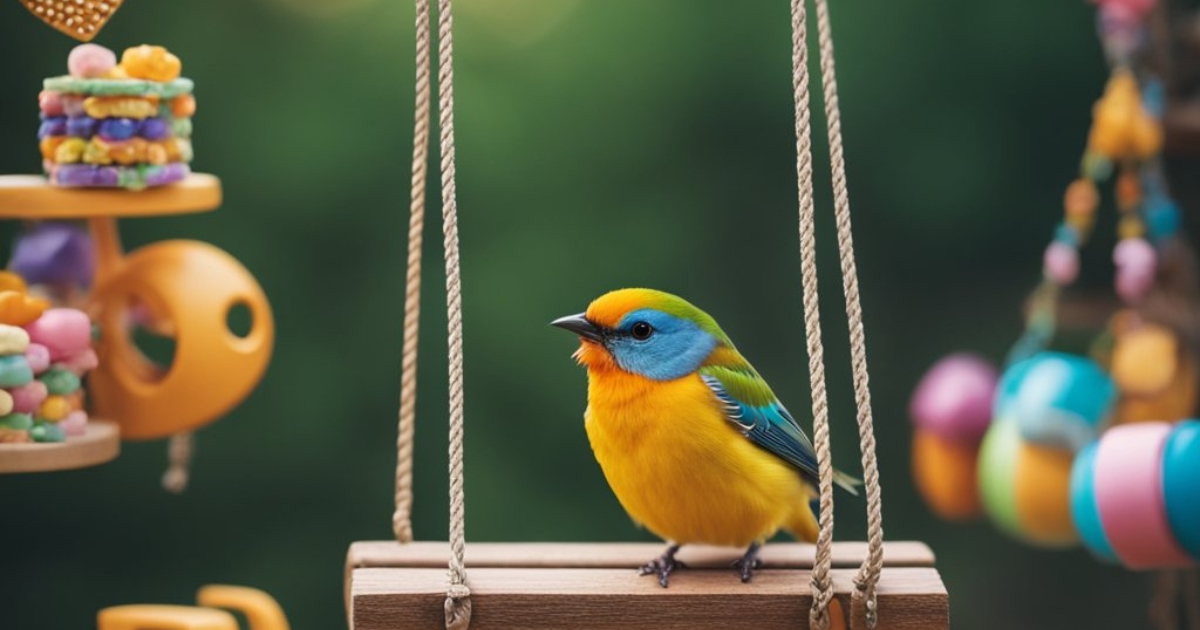Forming a close bond with your feathered friend is one of the great joys of owning a bird. When you and your bird truly connect, you’ll be rewarded with a loving companion who is excited to interact with you and happily anticipates your arrival.
While bonding takes time and patience, there are simple techniques you can use right away to start strengthening your relationship. Even small gestures of trust and affection between you and your bird are cause for celebration.
In this article, you’ll discover 10 easy tricks to make your bird love you. From understanding your bird’s unique personality to engaging in fun activities together, these tips will have your bird singing your praises in no time. Let’s explore the secrets behind building an unbreakable bird-human bond.
Understanding Your Bird
To make your bird feel safe and comfortable enough to bond with you, start by understanding their unique needs and behaviors. Different bird species have varying natural instincts that impact the bonding process.
Consider Your Bird’s Social Nature
Some birds, like cockatiels and budgies, are very social and require interaction and stimulation. Solitary birds, like canaries, prefer to be left alone when first getting to know you. Adapt your approach based on your bird’s personality.
Recognize Body Language Cues
Birds use body language to communicate their feelings. For example, a bird who hisses or nips likely feels scared or threatened. Watch for signs of contentment like chirping, beak grinding, and relaxed posture.
Provide Species-Specific Enrichment
Make sure your bird’s environment caters to their natural behaviors. For instance, a large cage allows space to flap wings, while toys satisfy instinctive foraging needs. Customize care to support their well-being.
Understanding the unique needs of your feathered friend is key for nurturing a loving relationship. Now let’s explore methods for actively building trust and affection.
Building Trust and Comfort
Making your bird feel safe and secure with you is the foundation for bonding. Here are three simple tricks to establish trust and comfort right from the start:
Trick 1: Create a Safe and Stimulating Environment
Setting up the right habitat dramatically impacts your bird’s comfort level and ability to bond with you. Be sure to:
- Get a sufficiently large cage for flight and climbing
- Include perches, toys, and foraging opportunities
- Place the cage in a peaceful area of your home
- Maintain proper lighting and humidity
- Reward desired behaviors with treats and praise
An enriching home that allows for natural behaviors promotes a happy, friendly bird. Take time to properly setup and customize their living space.
Trick 2: Respect Your Bird’s Personal Space
Since birds are prey animals, they startle easily and need time to become comfortable with you in their space. Avoid forcing interactions or restraints. Let them make the first moves.
- Speak softly and move slowly when approaching the cage
- Never reach into the cage – allow them to step onto your hand
- Sit patiently and let them observe you before attempting to handle
- Pay attention to body language indicating fear or distress
- Back off if they seem nervous; try again later
Giving your bird control over engagements makes them feel secure and trusting. Let them warm up on their own timeframe.
Trick 3: Talk to Your Bird Regularly
Birds are vocal creatures who can become strongly attached to familiar voices. Talk or sing softly to your bird throughout the day.
- Use soothing tones and mimic their vocalizations
- Describe your actions so they understand routine
- Repeat positive phrases like “good bird”
- Provide companionship if they’re home alone a lot
- Consider playing bird videos or music when away
Chatting with your bird helps them feel bonded to you. Make your voice a source of comfort and security.
With these simple trust- and comfort building techniques, your bird will quickly come to see you as a safe companion.
Bonding and Interaction
Once your bird feels at ease in your presence, you can move on to more active bonding experiences. Daily positive interactions are key for forging a tight bond.
Trick 4: Offer Treats and Rewards
Positive reinforcement using high-value treats helps your bird associate you with good feelings.
- Determine favorite nutritious snacks like seeds, fruit, or nuts
- Reward desired behaviors immediately after they happen
- Start with a treat in your palm, then phase to treat dispensing from a closed fist
- Offer excited praise and affection along with the treat
- End interactions on a positive note
Treats given through training build anticipation for time together. But beware of obesity from overindulging!
Trick 5: Engage in Playful Activities
Interacting with toys and games engages your bird’s natural behaviors while bonding with you.
- Introduce new toys and rotate them frequently to maintain interest
- Incorporate foraging opportunities by hiding treats in paper or cardboard
- Try clicker training or teaching simple tricks like waving or turning in a circle
- Offer head scratches (if they enjoy it) while sitting together
- Engage in gentle play, like rolling a ball back and forth
Seeking out your involvement in fun activities leads to an emotionally deeper relationship.
Trick 6: Spend Quality Time Together
Simply sitting quietly and observing your birds demonstrates a meaningful interest in them.
- Set aside dedicated one-on-one time each day
- Let them eat treats from your hand as you chat
- Read, play soft music, or go about an activity in their presence
- Enable safe outdoor time for bathing, supervised flying, and sunshine
- Consider wearing a bird sling or vest for secure cuddling
Focused attention during calm interactions cultivates trust and fondness.
Bonding through training, play, and companionship shows your bird that you cherish your relationship.
Advanced Bonding Techniques
Once you and your bird have built a foundation of trust, you can try these optional advanced tricks to take your bond to the next level:
Trick 7: Target Training
Using clicker training, teach your bird to touch a target stick. This builds communication and cooperation.
Trick 8: Teach Fun Tricks
In addition to targeting, try teaching them to wave, spin, nod, or do a high-five. Just a few minutes of training each day creates lots of bonding time.
Trick 9: Provide Supervised Out-of-Cage Time
Allowing safe room exploration gives both independence and shared discoveries. Just be sure to bird-proof the area first!
With patience and consistency, these advanced techniques build an even stronger relationship over time.
Addressing Common Bonding Challenges
However, all birds have unique personalities, so bonding trouble spots do arise. Here’s how to overcome some common challenges:
- Fearful Birds: Work slowly to build trust through treats or target training. Never force interaction. Allow them to make the first moves.
- Aggressive Birds: Avoid triggering aggressive behaviors. Redirect their attention to toys or training instead. Consult an avian behaviorist if needed.
- Destructive Behaviors: Provide ample enrichment and supervised exploration opportunities. Ignore unwanted behaviors and reward good ones.
- New Home: Spend lots of gentle time near the cage, reading or singing. Offer high-value treats for any voluntary engagement. Let them adjust their timeline.
With ample patience and persistence, even bonding roadblocks can be overcome in time. Focus on small signs of progress to stay motivated.
Additional Tips and Resources
Here are some extra tips and resources for further exploring the world of bird bonding:
- Check out avian veterinarian Dr. Bird’s informative website about bird socialization and bonding.
- The Parrot Forum has helpful posts about building trust with new birds.
- For parrots, Barbara Heidenreich’s blog offers great bonding insights.
- The book “The Companion Parrot Handbook” by Sally Blanchard has in-depth bonding advice.
- Consider signing up for a positive reinforcement training class to enhance engagement.
- Different species have unique bonding needs – research techniques tailored to your particular bird.
People Also Read:
Conclusion
From enriching their environment to engaging in training and play, using these 10 simple tricks will strengthen the bond between you and your feathered friend. Remember to let your bird set the pace and celebrate small gestures of trust and affection.
While forming a close relationship takes time and consistency, the rewards of a loving bond with your bird are well worth the effort. If you provide patient care and affection, your bird is sure to return your devotion with nuzzles, cuddles, and excited chirps of delight each time you enter the room!

